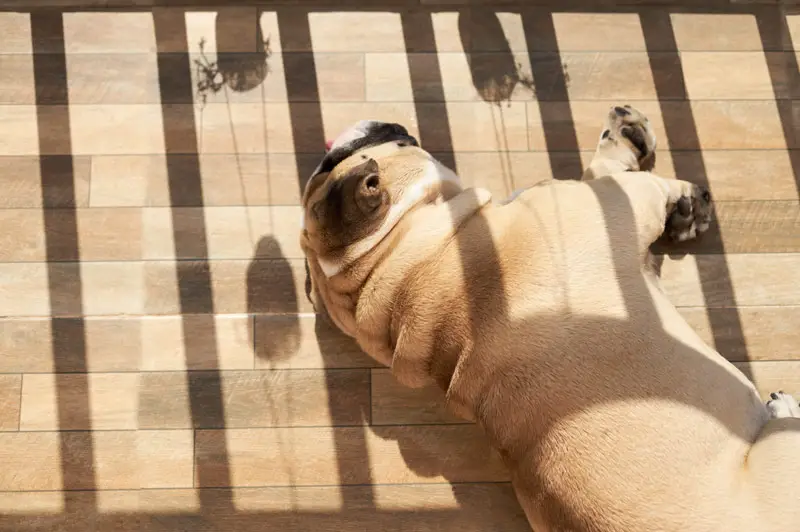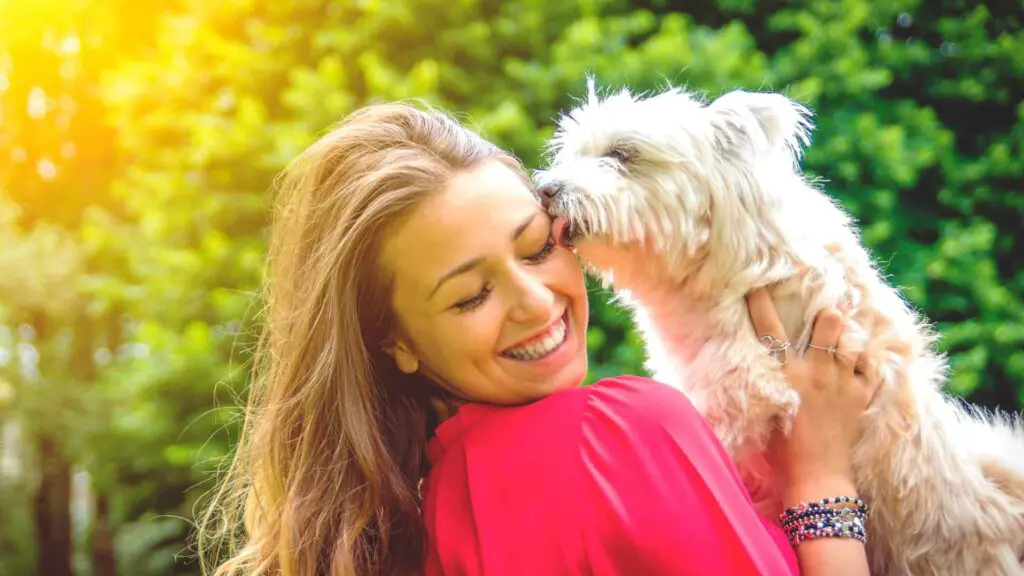Reasons behind Sunbathing by Dogs

Role of Vitamin D
Apart from its criticality for the dog’s bone strength, Vitamin D plays the role of a “Prohormone.” They need it to receive calcium. So the act of sunbathing is directly linked to the production of Vitamin D in dogs too.
There is also Vitamin D’s association with nerve control, muscle growth, and bone generation in dogs. The fatty tissues and dog liver is the storage area for this vitamin. An optimal quantity of it is necessary for calcium and phosphorous generation.
A point to understand is that Vitamin D absorption in dogs is not as efficient as that for humans. Due to the presence of fur on their bodies, the vitamins are not directly transferred into the body. As this essential nutrient remains on their fur, they would have to lick it for orally ingesting it into their bodies.
Apart from receiving it through sunlight, dogs also get their dose of Vitamin D via their diet. Generally, dogs need less Vitamin D in comparison to humans. Most of their nutritional requirements can be met through a well-balanced diet. If you would like to ensure that your dog gets ample Vitamin D through their daily diet, make sure to include the following items in their menu:
- Salmon
- Eggs
- Organ meats (e.g., Liver)
- Other dairy products safe for dogs
Apart from this list, another good practice is to check for cholecalciferol’s availability in the set of ingredients while you purchase dog foods. This bio-chemical is a category of Vitamin D that is easily absorbed and utilized by the dog’s body.
Improves Immunity
Recent studies conducted in Veterinary Science show that Vitamin D levels in dogs and cats are linked to their body immunity. Lower Vitamin D presence increases the chance of a dog getting several types of cancer, heart and gastrointestinal diseases.
So let’s encourage our dogs to step out onto the lawn and get their precious quota of immunity boosters via sunlight.
Relief from Stress, Anxiety, and Joint Pains
A good sunbath goes a long way in creating a sense of relaxation in dogs. Vets and dog trainers recommend this activity for the stress-release of dogs facing anxiety and excessive fear-related issues.
Looking from the perspective of aged dogs, they often tend to suffer from rheumatic diseases. Sunlight acts as a natural remedy to joint pains and associated illnesses.
Sunbathing for Happiness
Medical science claims that exposure to sun rays is directly linked to the production of serotonin in dogs. This hormone, also known as the “Happiness Hormone,” is useful in controlling mood fluctuations and works as a neurotransmitter to stabilize their moods.
I have often noticed my Laila (German Shepherd) showcasing signs of excitement, energy, and overall happy vibes after a good session of sunbathing. So the evidence does speak for itself as far as the goodness of sunbathing is concerned.
Proper Sleep Patterns and Brain Activity
Sunbathing has a positive impact on the generation of melatonin hormone in dogs. This hormone is responsible for sound sleep cycles in them. Therefore, regular sunlight reception guarantees the dogs get their daily quota of quality sleep consistently.
The dog’s circadian rhythm or the internal clock is improved on exposure to sunlight. This body process is directly associated with brainwave generation, cell regeneration, and many other critical biochemical processes in dogs.
Disturbances in the circadian rhythms can affect their immunity and cognitive activity. Thus, sunbathing is an essential activity for dog health, both physical and mental.
Essential Warmth During Cold Weather
Dog breeds with less fur like Chihuahuas require more exposure to solar rays during cold weather. Lower temperatures make them more vulnerable to diseases. Adequate sunlight helps them avoid ailments and remain happy and healthy.
These are some of the primary reasons why dogs like to sunbathe. It is clear from this list that the reasons are more resonant than what the naked eye can perceive.









